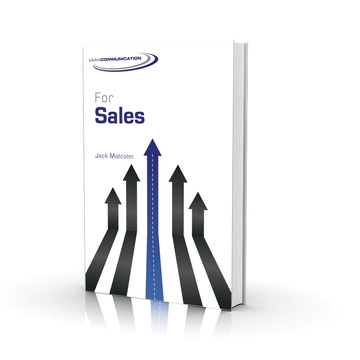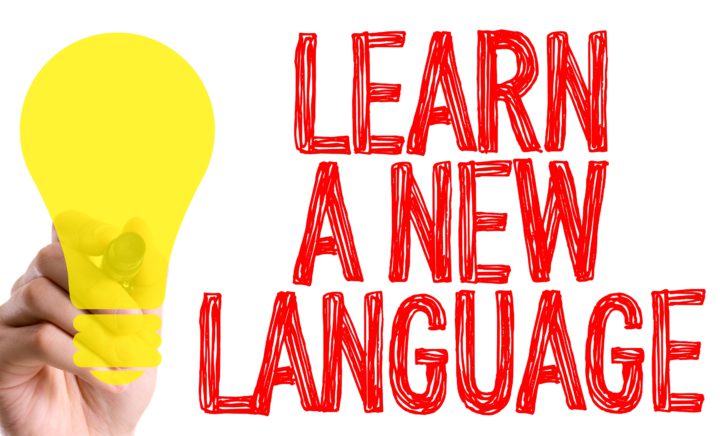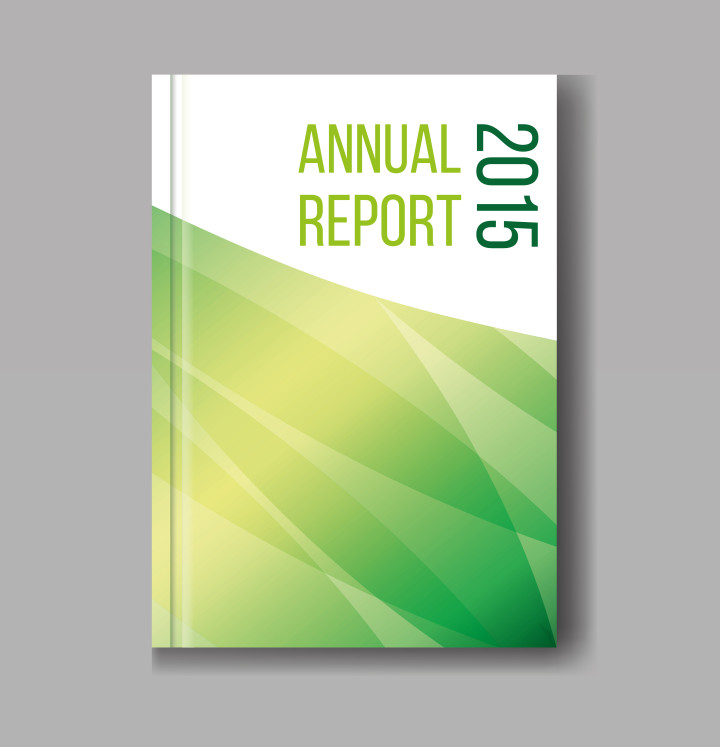Would your prospects and customers pay to talk to you?
The only way that’s likely to happen is if they know you will bring them useful ideas to improve their business outcomes without wasting their time!
One of the recurring memes in the B2B sales world is the idea that salespeople are an endangered species, because buyers have so many alternative sources that they can tap to get the information they need to make an effective purchase decision. And with all the other demands on their time, it’s no wonder that buyers put off talking to salespeople for as long as they can.
When quantity is unlimited, quality counts more than ever. Precisely because there is so much information available and so many voices clamoring for the attention of your dream buyer, they will welcome a trusted voice who will give them just what they need when they need it without wasting their precious time.
My new e-book, Lean Communication for Sales, will help you to become that trusted voice, by showing how to communicate more value in fewer words—and become a valuable asset to your customers. As a B2B sales professional, your role is to deliver the information buyers need to make the best possible decision.
Lean Communication for Sales will help you communicate higher value with less waste by applying the principles of lean thinking to your sales communication process. You will be able to apply 9 powerful ideas as simply as ABCD:
- Add value: Leave your customers better off by Answering the Question that is on every buyer’s mind, and using Outside-in Thinking to communicate what they value the most.
- Brevity: Save time and boost credibility by putting your Bottom Line Up Front, and use the So What filter to eliminate clutter.
- Clarity: Ensure that your message is heard, understood, and remembered through Transparent Structure, Candor, and User-friendly Language.
- Dialogue: Co-create value with your buyer through effective dialogue, using Just-in-time Communication and Lean Listening.
Talk less, sell more: improve the quality of your customer conversations with Lean Communication for Sales!
Are you planning an overseas vacation this summer? If so, have you picked up a phrase book to learn a few useful phrases?
We Americans are probably the least likely to do so. When we visit a foreign country, we expect that everyone else will speak English, and very few of us make the effort to pick up even a few words. We find that it generally works OK as long as we stick to the crowded tourist spots where the locals have learned English so that they can sell things to us. So, we take the path of least resistance and miss out on so much of the country.
But if you do venture out to areas where English is less common, at some point you’ll probably have to communicate with someone who does not speak your language. You’ll notice that you speak louder and slower, as if shouting will get the meaning across the language barrier. What happens instead is that both sides get confused and annoyed, and communication fails. In the end the other person either walks away or if they are polite, they direct you to someone who speaks your language.
While this can make for a humorous scene in a comedy, unfortunately it’s all too common and far more serious when it happens in a sales call—except that usually the language barrier is not between English and Spanish or French, but across different “languages” that salespeople and customers speak.
Most salespeople speak the language they are most comfortable with—it’s called “product-speak”. This is natural, because they know their product better than anything else, they’re well-trained in its vocabulary, and it’s the language they speak with each other when they talk shop. So, when they venture out into a new prospect’s decision process, they expect that everyone else will speak the same language. If they find someone who understands the language, they stay in their comfort zone.
The problem with staying here is that they miss out on so much potential value, and they jostle with every other competitor who is also spending time here. The bolder salespeople venture outside the comfort zone where the real value is—but if they go unequipped to speak the language, it’s not much better than staying put. When they begin spouting product-speak at senior decision-making levels, they run the risk of a communication fail, and end up getting sent back to the “appropriate” level. As the old saying goes: in sales, you get sent to who you sound like.
The ones who venture out successfully are the ones who make the effort to learn and speak the local language. Depending on the level, the right language is either process-speak or business-speak.
Process-speak means understanding the nuts and bolts of the actual business processes or operations that your customer uses to add value to their customers, and which your solution impacts. It requires an intimate understanding of the inputs, steps, operations, and outputs. Can you help your customer make their processes faster, cheaper, better, or more reliable? Can you express those improvements in measurable terms? If so, you have the language skill to succeed at this level, and it’s usually higher and more influential than the product level. In some ways, process-speak is the hardest language to master, because every industry is different and has its own specialized processes.
Of course, some processes are complex enough that you will always benefit from having a sales engineer to translate, but it’s always useful to know enough so that you know what you don’t know.
Business-speak is spoken at the highest levels in the decision process. It’s the most intimidating for product-speak salespeople, but it’s actually easier to learn, because all businesses use a common financial language. It’s not that difficult to learn: once you pick up the terminology of financial statements, most of it is simply basic arithmetic. The first step is to get a copy of your customer’s latest annual report. You can get an excellent basic education from reading the Management’s Discussion of Financial Results section. If you get stuck on some of the terminology and concepts, I would highly recommend my own book, Bottom-Line Selling, which explains what they mean in SO WHAT sales terms.
There’s a big difference between a tourist and a traveler. The tourist flies in for a few days, a week or two at most—and spends time only where everyone else is and just skims the surface of the experience of being in that country. A traveler stays longer, ranges wider, and invests time and effort to read about the history and culture of the destination, as well as to master a few words and phrases. Tourists expect others to adapt to them, travelers adapt to others, and they know that making the effort conveys respect and opens more doors than a sense of language entitlement.
If you are going to have long term success in high-end complex B2B sales, there is no alternative to becoming fluent in more than one language.
It’s that time of year again. Spring, when a young man’s fancy turns to thoughts of financial disclosure—specifically your customers’ annual reports. This is the time of year when most of the 2015 reports come out, and I like to remind my readers that now is the time to download a copy, read it, and use the information gained to keep up with your customers and if possible develop fresh insights based on their changed environments. Even if you’re already doing a good job of keeping up with developments, it’s useful to peruse for clues about where they are going in the year ahead.
But I fear it’s a losing battle, and I doubt my feeble attempts to remind you do much good. I say that because of an article in last Saturday’s Wall Street Journal: “It’s Time to Re-Learn the Lost Art of Reading.” In the article Jason Zweig urges investors to read annual reports, and laments the fact that it seems to be a dying practice. He cites research by a Notre Dame finance professor who found that only 29 people a day download the average annual report when it comes out. (I wonder how many of those are salespeople?) “Even General Electric’s annual report was downloaded from GE’s website only 800 times in 2013”!
You can glean a lot from reading an annual report, but even if you don’t get any specific actionable information, it’s extremely helpful to earn the right to speak to higher level decision makers and show that you are interested in impacting their business results, not just pushing products into their pipeline. And if nobody is reading them nowadays, what a terrific opportunity to stand out as someone who has.
So, as soon as you finish this paragraph, do yourself a favor. Go straight to the Investor Relations section of your top customer’s website, download their 2015 annual report, and then read it. You don’t have to read the whole thing cover to cover, but you should definitely read the Chairman’s Letter, peruse the numbers, and check out Management’s Discussion of Financial results. To glean specific tidbits, use these questions I furnished in a previous reminder.
To clarify why clarity is important in selling, let’s go back to the purpose of lean communication: to improve the listener’s RoTE, or Return on Time and Effort. By being clear in your sales communications, you help your buyers by reducing their effort to receive and process your message in the way you intend. So, by being clear you make it easier on your buyer and you reduce the risk of misunderstanding at the same time.
As if the benefit to the buyer were not enough, clarity in your communications will also help you sell in three ways: it will increase your personal believability, make your message more convincing, and make action more likely.
Your personal believability goes up; you will sound authentic for the simple reason that you will be authentic. People can sense when you are being yourself rather than a sales persona put on for their benefit, and they will respond to that. At the same time, if you have trouble explaining something simply, others may infer that you don’t understand it yourself.
Second, as Daniel Kahneman tells us, easy = true.[1] This is shorthand for saying that things that are easy to grasp are equated in our minds with truth. The easier it is to understand something, the more it sounds like “common sense”. No one likes to work any harder than necessary, and if the “package” your message comes in is hard to open, they may not make the full effort.
Finally, clarity will make action more likely in two ways. In the sense of simplifying the choices for your buyer, clarity increases the likelihood that they will buy. You may be familiar with the experiment in which researchers set up a jam tasting table in a grocery store. When they had 24 flavors on display, more people stopped to try a sample; when there were only six choices, fewer people stopped by, but they were more likely to purchase and to report greater satisfaction with their purchase.[2] And in B2B sales, if you want someone to be a champion for you internally, it’s going to be much less likely if they find it difficult to grasp the complexities of your message.
How to be more clear
The first rule of clarity is to be candid and direct. As I’ve written before, candor is a choice about whether to say something and directness is how you should say it. As a salesperson, want to present your solution in the best possible light and you don’t have an obligation to expose every single wart or deficiency—your competitors will do that for you. But if asked about a weakness, you should answer the question candidly and directly without dancing around; and you can also earn a lot of respect by bringing it up yourself before being asked about it. (presponse)
In general, lean communication is biased to being as direct as possible, but directness is a trickier matter in sales conversations for two reasons. First, if you know that your competitor’s offering has a glaring weakness, it might be more professional or prudent to be less direct about it. Second, it’s easy to provoke a backlash by being too direct and telling the customer all the reasons they should buy from you—it’s usually better to make it their own idea by leading them to conclusions indirectly through questioning.
The second rule of clarity is to employ user-friendly language. Put it in terms they will understand, and just as importantly, remember when it comes time to make a decision. When things are vague or abstract, they are less likely to be understood and remembered. Make your key points easier to grasp by using Q-SAVE:
Quantity: Although numbers may seem like the ultimate abstraction, they are actually the best way to make something real and meaningful. You can say your solution speeds up their process, or you can tell them it makes it 17% faster, which translates to $3.4 million in additional revenue. And try to use their own numbers when possible for rock-solid believability.
Story: A story is the leanest communication tool you can use, because it can pack the most power into the fewest words—as long as you select the right one and tell it right. In sales, the most convincing stories are those about similar customers who faced the same situation.
Analogies: Analogies make foggy ideas clear by connecting them to the familiar, and a well-chosen one can snap your listener into instant focus. The most powerful analogies are those that compare something to the buyer’s own company. For example, when pressed on price, you can use the analogy of their own sales force with their own customers to stress the importance of selling on value.
Visuals: The cliché, “a picture is worth a thousand words” is true: despite the common misconception that people have different sensory preferences, the fact is that we are all visual. But that also means that you should be very careful about what pictures you put into presentations. Drop all the canned and posed pictures of products and satisfied customers—they won’t add any value but they will be remembered.
Examples: Examples clarify by making things real in the buyer’s mind, and they make you more credible. A good example of this is DILO selling, where you show how using your solution will make specific improvements in the “Day In the Life Of” the end user.
Previous posts in this series:
Lean Communication for Sales: Talk Less, Sell More?
Lean Communication for Sales: Value
Lean Communication for Sales: Top-Down Communication
Lean Communication for Sales: Reducing Waste
[1] Daniel Kahneman, Thinking, Fast and Slow, p. 62.
[2] When Choice Is Demotivating: Can One Desire Too Much of A Good Thing?






